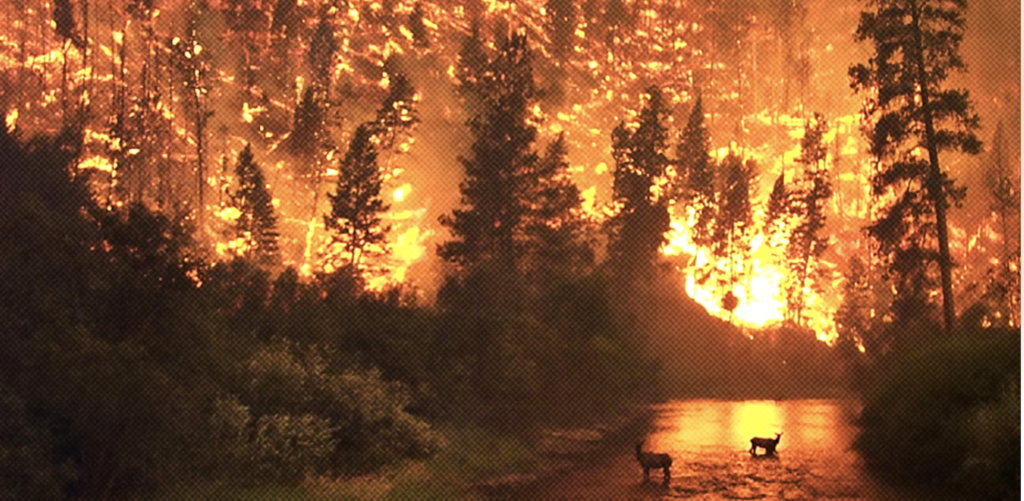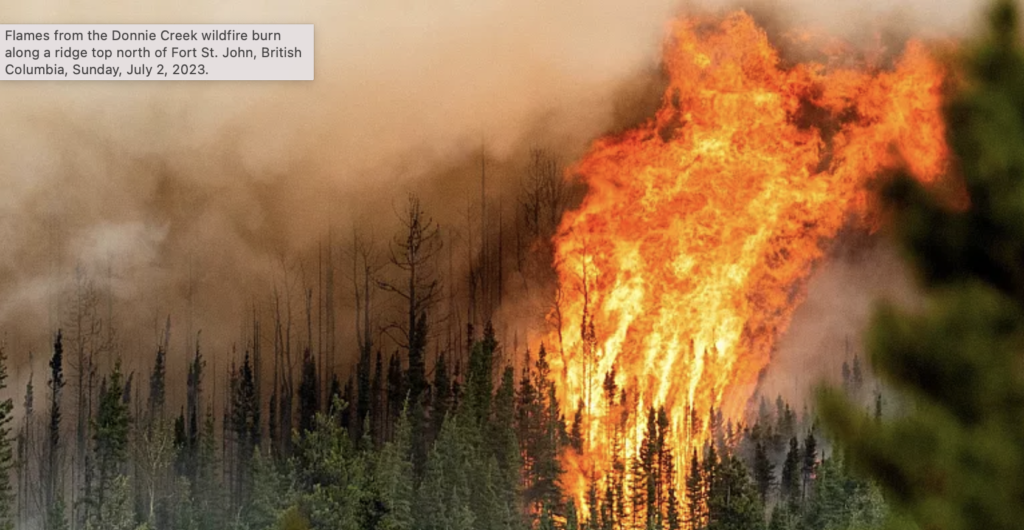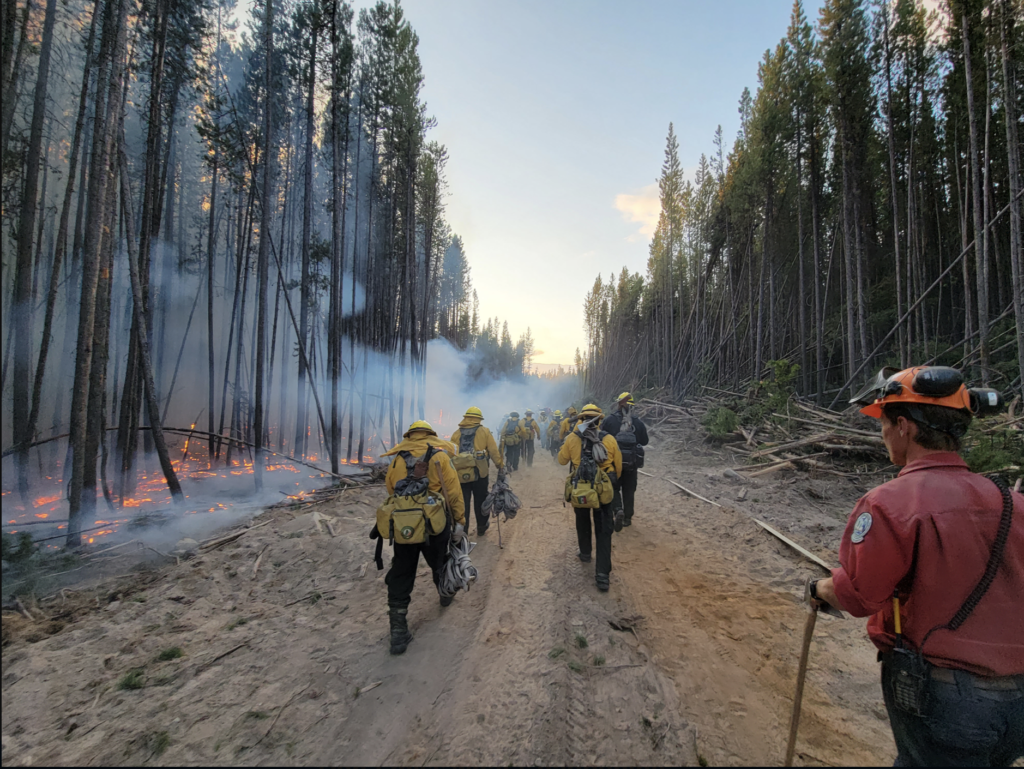Is there an agreement with BC Ferries about an evacuation? And what happens if thousands head for the Langdale terminal?

By Margot Grant, Staff writer
Last week, we published the article “SCRD not responding to questions about wildfire evacuation plans.” After two weeks of repeated attempts to get answers we gave up and just published the questions.
As it turned out Dean McKinley, the Sunshine Coast Regional District (SCRD) Chief Administrative Officer, had answered our questions, but his information had been sent to the wrong email address. A one-letter typo lead to a big misunderstanding.
When McKinley found out, he resent the mail and answered additional questions. Here’s what we learned:
Early notification and communication is crucial in case of a wildfire. The Sunshine Coast has an electronic alert system, but what happens if the power is out? Is there a contingency plan with sirens or sound trucks to spread messages, other ways of communication?
Voyent Alert, our emergency alert system, still works if the power is out. The systems sends messages through an app, texts, voice call or email. If the power went out, Voyent Alert would still work on cell phones or other battery powered devices. We encourage everyone to sign up.
Sirens don’t really tell people what they should be doing and sound trucks would take too long to convey the required information, but in a worst-case scenario loud hailers would also be used.
Part of personal preparedness is having wind-up or battery-powered radios to receive information via local radio stations. Local radio station FM 91.7, the SCRD website, social media, Facebook and X (formerly Twitter) will all give information on where to go and what to do.
We also engage with MoTI (Ministry of Transport and Infrastructure) for signage on the Highway and Sunshine Coast Tourism to help spread the information.
What happens if the command centre on Field Road is affected by fire?
Field Road has back-up power as do other SCRD facilities. We also have several potential back-up Emergency Operations Centre locations along the Sunshine Coast if the main location at Field Road is compromised.

Right now, the only three evacuation plans are for Egmont, Tuwanek and the Bay/Bluff are in Gibsons. Are more evacuation plans in the making? When can we expect them?
There is no timeline in place for the completion of an evacuation plan for the entire Sunshine Coast and it is unlikely we are going to have to evacuate the entire Sunshine Coast. At this time, the focus continues to be on personal preparedness and smaller-scale evacuation plans which are much more likely to be implemented.
We have started the evacuation planning for smaller communities and we are engaging locals to provide us with reliable and relevant information such as what dock can be used, what would be good muster areas, et cetera.
Is there an agreement with BC Ferries about evacuation? Is there a plan?
We do not have a formal agreement with BC Ferries but they are one of our partners in the Sunshine Coast Emergency Program and would be available to assist us as needed.
What happens if thousands of people head for the Langdale terminal?
Congestion will be a problem and will have to be managed very quickly. We will be engaging the RCMP, MoTI, Capilano Highway and local flagging companies to lead that portion of the evacuation, with assistance from BC Ferries.
Coordination assistance will come from the Southwest Provincial Regional Emergency Operations Centre who will engage partner agencies at the highest level for support.
We will also be engaging the Coast Guard, Marine Search and Rescue and local water transport companies to assist with moving people to safety.
Are there evacuation plans for residents of long-term care facilities and the hospital?
These facilities, and the schools, have their own emergency and evacuation plans in place. The SCRD would support them as needed.
Why will the SCRD not tell people where the evacuation centres are?
Reception centre locations are fluid and dependent on the nature and location of an emergency. So, for example, hypothetically, while there may be a “reception centre” at one of our arenas it would not make sense to have publicized that as a reception centre if the emergency was responding to an ammonia plant leak at that arena. So we will not make the reception centre location(s) known until the nature and location of the emergency is known. The same goes for evacuation routes.
The current information about wildfire emergencies and evacuation on the SCRD website is not meant for the general public. Is there a plan to provide information in simple, clear language?
We are currently working on an information package that we hope to have online before September 14.

Are there enough firefighters and other volunteers in case of a wildfire on the Coast?
Our firefighters, in addition to providing fire prevention and suppression services, also engage in emergency medical and rescue; some of the Sunshine Coast firefighters are trained and qualified in marine firefighting and hazardous materials response operations.
Unfortunately, recruitment and retention of volunteers is becoming increasingly difficult. In addressing this issue, the SCRD has offered extended health benefits to our volunteers. This has been received well, particularly for firefighters who are self-employed and have no other health benefits.
There is a plan to move from a volunteer service to a paid-on-call model? Can you tell us more about that plan? What stage is it at?
Yes, it is being considered. This issue was examined in the 2018 Fire Department Strategic Plan Review. It was recommended that a paid-on-call model should be “considered”. This would require a report being prepared for board consideration and a budget proposal if this was to be implemented in the future.
The women and men providing these services to our communities are so much more than volunteers. They are unpaid professionals.
What else is the SCRD doing to reduce the risk of wildfires?
Personal and neighbourhood preparedness are key. A well-informed community will know what to do in an emergency.
This spring our emergency coordinator Nancy Hughes met with the West Howe Sound Community Association, the Gambier Island Community Association and members of the Roberts Creek community at a wildfire townhall. This fall, she will continue to talk to other community groups.
Another important thing is the FireSmart program.
We have been making presentations to community associations, community groups and charitable organizations since the early part of July. A lot of people do not realize that during a wildfire approximately 90 per cent of structure fires are caused by ember and sparks, not radiant heat from the wildfire itself. What can we do about this?
The statistics show that a home with a flammable roof with no defensive action or vegetation management around the perimeter has about a 4 per cent chance of surviving a wildfire. With some defensive action and management, this figure jumps to 20 per cent. A home with a non-flammable roof with vegetation management within 10 metres has a 70 – 90 per cent chance of survival.
Some basic principles: use non-combustible building materials, including vents, and create a 1.5-meter non-combustible zone around your home. Remove all vegetation in this zone and replace it with gravel or other hardscaping material. Do not use not bark mulch; in fact all bark mulch should be removed from a 10-metre zone around your home. Be sure to clear any windblown leaves from under your decks or open staircases.
Firewood should be removed from the side of the home and stored at least 10 metres from your home. All propane tanks should also be stored a minimum of 10 meters from your home.
Within this zone, limb trees up to a minimum of 2 metres from the ground and only use fire-resistant plants. Grass should be kept shorter than 10 cm. As far as 30 metres from the structure limb trees, clear dead brush and debris, and even consider spacing trees 3 metres apart.